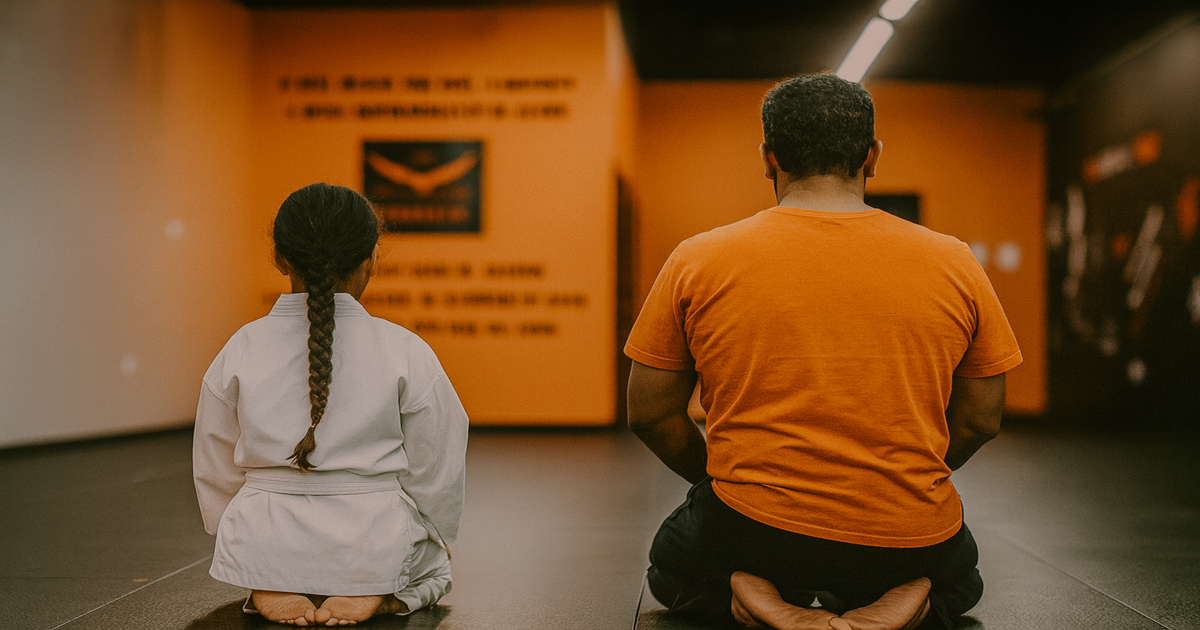How Much Screen Time is Too Much for Kids? What Every Parent Needs to Know!
Do you worry about how much time your kids spend on screens?

If you do, you are not alone. Many parents struggle with finding the right balance between screen time and other activities for their children. In this article, we will answer the question of how much screen time is too much for kids, and how you can help your kids use screens in a healthy and productive way.
Screen time refers to the time spent using devices such as TVs, computers, smartphones, tablets, and video games. Screen time can have both positive and negative effects on kids' development, health, and well-being. However, too much screen time can also interfere with their sleep, learning, social skills, and physical activity.
How much screen time is too much for kids? And how can you help your kids use screens in a healthy and productive way? In this article, you will learn:
• What are the current guidelines and recommendations for screen time for kids of different ages
• What are the risks and benefits of screen time for kids' mental and physical health
• How to set limits and boundaries for screen time and encourage other activities
• How to monitor and manage your kids' screen time and online safety
By the end of this article, you will have a better understanding of how to make screen time work for your family. Let's get started!
How much screen time is too much for kids?
According to the AAP (American Academy of Pediatrics), the appropriate amount of screen time by age is as follows
• For children younger than 18 months, screen time should be avoided, except for video chatting with family and friends.
• For children 18 to 24 months, screen time should be limited to high-quality programs that are watched together with a parent or caregiver.
• For children 2 to 5 years, screen time should be limited to one hour per day of high-quality programs that are watched together with a parent or caregiver.
• For children 6 years and older, screen time should be balanced with other healthy activities, such as physical activity, sleep, and social interactions. Parents should set consistent limits and boundaries for screen time and monitor the content and quality of the media their children use.
The optimal screen time for children and adolescents depends on various factors, such as the quality, content, and context of screen use. Some of these factors are:
•
Quality: The quality of screen time refers to how engaging, educational, and developmentally appropriate the media is for the child. High-quality screen time can have positive effects on children's learning, creativity, and social skills. Low-quality screen time can have negative effects on children's attention, behavior, and mental health.
•
Content: The content of screen time refers to what the child is watching, playing, or using on the screen. Different types of content can have different impacts on children's well-being. For example, violent, sexual, or inappropriate content can expose children to harmful messages and images, while educational, pro-social, or creative content can enhance children's knowledge, values, and interests.
• Context: The context of screen time refers to how, when, where, and with whom the child is using the screen. The context can influence how the child interprets and responds to the media. For example, screen time that is used in moderation, at appropriate times, in designated places, and with parental guidance and co-viewing can be beneficial for children's development. Screen time that is used excessively, at bedtime, in bedrooms, and without parental supervision and interaction can be detrimental for children's health and relationships.
Here’s some data that illustrates the current trends and patterns of screen time among kids in our society and it will Blow Your Mind!
• The average screen time for children 8 to 18 years is 7.5 hours per day, of which 4.5 hours are spent watching TV.
• The average screen time for children 2 to 5 years is 2.5 hours per day, of which 1.5 hours are spent watching TV.
• The average screen time for children under 2 years is 1.5 hours per day, of which 1 hour is spent watching TV.
• The percentage of children who spend more than 2 hours of screen time per weekday, excluding schoolwork, is 65.7% for boys and 64.6% for girls.
• The percentage of children who have a TV in their bedroom is 71% for 8 to 18 year olds, 42% for 2 to 5 year olds, and 29% for under 2 year olds.
• The percentage of children who use a smartphone, tablet, or other device before bed is 75% for 8 to 18 year olds, 36% for 2 to 5 year olds, and 26% for under 2 year olds.
Devices are not inherently bad, but too much screen time can have negative effects on kids' physical, mental, and social health. Here are a few:
•
Obesity: Screen time is a sedentary activity that can reduce the time and energy spent on physical activity. Studies have shown that children who watch more than two hours of TV per day are more likely to be overweight or obese.
•
Sleep problems: Screen time can interfere with children's sleep quality and quantity by disrupting their circadian rhythms, suppressing their melatonin production, and stimulating their brain activity. Studies have shown that children who use screens before bed or have screens in their bedrooms are more likely to have insomnia, delayed sleep onset, and reduced sleep duration.
•
Behavioral issues: Screen time can expose children to violent, sexual, or inappropriate content that can desensitize them to aggression and harm. Studies have shown that children who watch more violent media are more likely to exhibit aggressive behavior, thoughts, and feelings.
•
Academic performance: Screen time can distract children from their homework, reading, and other educational activities. Studies have shown that children who watch more TV or use more computer games have lower academic achievement, lower grades, and lower test score.
•
Attention span: Screen time can reduce children's ability to focus, sustain, and switch their attention. Studies have shown that children who watch more TV or use more electronic devices are more likely to have attention deficit hyperactivity disorder (ADHD) or other attention problems.
•
Creativity: Screen time can limit children's imagination, exploration, and expression.
Studies have shown that children who watch more TV or use more digital media have lower creativity, divergent thinking, and originality.
• Social skills: Screen time can isolate children from their family, friends, and community. Studies have shown that children who spend more time on screens have less face-to-face interaction, less empathy, and less social competence.
• Online safety: Screen time can expose children to cyberbullying, sexting, grooming, and other online risks. Studies have shown that children who use more social media, chat rooms, and online games are more likely to experience online harassment, solicitation, and victimization.
To prevent or reduce these negative effects, it is important for us as parents to set reasonable limits and guidelines for screen time, monitor and manage the content and quality of the media our children use, and model and foster healthy screen habits and a positive relationship with technology.
So How Do I Do That?
How can I manage my kids' screen time effectively?
I’ll share some things that have been effective with my son Elijah, as well as some research that will help your kids enjoy the benefits of technology, but also protect them from the risks of too much screen time. It’s all about finding balance!
Let’s Goooooo!
How to Set Limits and Boundaries for Screen Time for Kids
Before there were rules and boundaries, it was a FIGHT to get my son off of his device. To him it probably seemed as if I was making the rules up as I went (maybe I was, lol) and pulling him off of his game or YouTube channel right as things were getting good! Once the ground rules were established he could no longer blame me for him having to come off his device. I was just enforcing the rules that he knew were in play.
These are some examples of some time rules and boundaries.
• Limiting screen time to a certain amount of time per day or week, depending on the age and activity of the child. Using the guidelines by the AAP discussed earlier, Elijah is on one hour a day during the week and 2 hours a day on weekends. This works well for us broken into 20 minute segments using a time. He comes to us and asks “can I get a 20?” We say yes and set the timer. When the timer expires he has the choice of getting another or saving for later. Once they are gone, they are gone. It’s AMAZING how he won’t argue with a timer, but he will have a tendency to argue with one of his parents.
• Setting specific times and places for screen time, such as after homework, before dinner, or in the living room. For example, you can designate screen-free zones, such as bedrooms, dining rooms, or bathrooms, and screen-free times, such as bedtime, mealtime, or family time. We have screen free zones at our house. The bedroom and dinner table are definitely two of them. Elijah can only use his device when he is where we can see him and be aware of what he is doing.
• Establishing the purpose and content of screen time, such as educational, recreational, or social. For example, you can allow your kids to use screens for learning, creativity, or communication, but not for violence, pornography, or gambling. We might allow our son to go “over” the screen time for the day if some of that screen time is iReady or school related screen time. We may even give some extra screen time as a reward for doing extra chores around the house.
• For older kids, creating a screen time contract or agreement that outlines the rules and boundaries for screen time, as well as the consequences for breaking them can work well. You can even ask for their input and have them sign.
How to Monitor and Manage Your Kids' Screen Time and Online Safety
Another helpful step to manage your kids' screen time effectively is to use screen time apps and tools that can help you monitor, control, and optimize your kids' screen time. These apps and tools can provide you with useful information, such as how much time your kids spend on screens, what apps and websites they use, and who they interact with online. They can also help you set limits and restrictions on screen time, such as blocking certain apps or websites, setting timers or schedules, or locking devices remotely.
Here are some screen time apps and tools I found online:
•
Family Link: A free app from Google that lets you create a Google account for your kids under 13 and manage their Android devices. You can view their screen time activity, set daily limits, approve or block apps, lock their devices, and locate them.
•
Screen Time: A free app that lets you monitor and manage your kids' screen time on iOS and Android devices. You can set time limits, app limits, bedtime, downtime, tasks, rewards, and parental controls. You can also view reports and notifications on your kids' screen time.
•
Qustodio: A paid app that lets you monitor and control your kids' screen time on Windows, Mac, iOS, Android, and Kindle devices. You can set time limits, app limits, web filters, location tracking, panic button, and social media monitoring. You can also view detailed reports and alerts on your kids' screen time.
•
Circle: A paid device that connects to your home Wi-Fi and lets you manage your kids' screen time on any device that uses your Wi-Fi. You can set time limits, app limits, web filters, pause the internet, and reward screen time. You can also view insights and history on your kids' screen time.
One of our Phoenix Martial Arts parents told me that she has her children’s ipads set to where they won’t work after a certain amount of screen time is used for the day. And the children are so clever that the older brother has been caught getting on his sister’s iPad and using her time before jumping on to his!
Conclusion
In this article, you have learned how much screen time is too much for kids, and how you can manage your kids' screen time effectively. Here’s what else you have learned.
• What are the current guidelines and recommendations for screen time for kids of different ages
• What are the risks and benefits of screen time for kids' mental and physical health
• How to set limits and boundaries for screen time and encourage other activities
• How to monitor and manage your kids' screen time and online safety
• How to model healthy screen habits and foster a positive relationship with technology
Screen time is not inherently bad, but it needs to be used in moderation, with quality, and with context. Screen time can be a valuable tool for learning, creativity, and communication, but it can also be a source of distraction, addiction, and harm. As parents, we have the responsibility and the opportunity to help our kids use screens in a healthy and productive way, and to balance screen time with other activities that enrich their lives.
We hope this article has given you some useful information and tips to make screen time work for your family. Remember, you are not alone in this journey. You can always reach out to other parents, experts, or resources for support and guidance. You can also share your own experiences, challenges, and successes with screen time with us. We would love to hear from you!
Now, it's time to take action.
Choose one or more of the steps we have discussed in this article, and implement them in your family. See how they affect your kids' screen time and well-being. Adjust and improve as you go along. And don't forget to have fun and enjoy screen time with your kids!
Thank you for reading this article. We hope you have found it helpful and informative. Please share it with your friends, family, or anyone who might benefit from it. And don't forget to subscribe to our blog for more articles like this one. Until next time, happy screen time!



